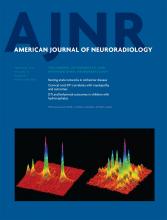The term “spinal arteriovenous metameric syndrome” (SAMS) is relatively new and is derived from craniofacial arteriovenous metameric syndrome (CAMS),1 which was introduced to designate a rare form of vascular malformation involving both brain and face. SAMS includes all spinal vascular malformations of nonhereditary genetic metameric origin, affecting not only the central nervous system (spinal cord) but other tissues originating from the same metamere. The classic definition of Cobb syndrome is limited to metameric-origin malformations involving the spinal cord, bone, and skin. SAMS is intended to include all forms of metameric malformations, even if lesions are expressed without involving the spinal cord. During embryogenesis, cell proliferation occurs at the central portion of the neural plate, and these cells migrate laterally between the embryonic ectoderm and endoderm, forming the mesoderm. Following segmentation of a paraxial column of mesoderm, each segment, or somite, further differentiates into sclerotome, myotome, and dermatome. Mutation of mother cells at this early stage of embryogenesis may induce multiple malformations in parts or all tissues of the same somatomeric distribution, including the central nervous system, skeleton, muscles, soft tissues, and dermis.
SAMS is an extremely rare condition, and a proper diagnosis has become possible since a selective spinal angiogram was developed in the late 1960s and early 1970s. Malformations are distributed along the corresponding metameric level, not the physical horizontal level. The origin of the main arterial supply to the spinal cord AVM or the level of a radicular nerve AVM is the level of specific SAMS. In some instances, the dermatome of a skin lesion may lead to the spinal cord level.
The number of cases reported is scanty, to our knowledge. Even in a review of 3 major series of spinal AVMs by Lasjaunias and Berenstein in their first edition of Surgical Neuroangiography (1992), only 17 cases were recognized as having a metameric origin among 192 spinal cord AVMs.2
This report of 28 cases of SAMS by Niimi et al is the largest series of such cases. There are many noticeable features in this series. First, the percentage of the nidus form of malformations (86%) is higher than the fistulous ones, compared with non-SAMS spinal cord AVMs (67%).2 The nidus forms involve wholly, or at least partly, the spinal cord. These are known to rupture more frequently than fistulous forms. The angioarchitecture of a nidus form is more complex. Because the basic vascular anatomy of the spinal cord consists of many perimedullary and intramedullary anastomoses, an intramedullary nidus form of AVM is often supplied by many direct and indirect arterial pedicles. Complex angioarchitecture adds to the difficulty of treating such lesions.
There was definitely female dominance among their patients with SAMS (M:F = 1:2.5), contrary to non-SAMS cases, which affected male and female equally. Interestingly, the other large series of SAMS, reported by Rodesch et al in 2002 showed 2:1 male dominance.3
One striking feature in this article is clinical presentation and prognosis. The initial presentation in 18 of 28 patients (64%) was hemorrhage, either subarachnoid hemorrhage or hematomyelia. Four more patients had hemorrhage after diagnosis before the first treatment, totaling 79%. It is not clarified in the article, but if one assumes that fistulous forms of spinal cord AVMs tend not to rupture, almost all patients with SAMS with a nidus-type malformation (22/24, 92%) had a hemorrhagic presentation before any treatment. Eleven patients had multiple hemorrhages. The recurrence rate of hemorrhage was 50% in this series, which is similar to the analysis of previous publications by Berenstein and Lajaunias,2 who reported the second hemorrhage rate of 54%. It would be interesting to analyze these patients further to find out any denominators that trigger rehemorrhage.
The other interesting point in these cases is associated aneurysms. It has been known that flow-related aneurysms are not common in spinal cord lesions compared with brain AVMs. Even though details of the types of aneurysms are not described in the text or whether they included pseudoaneurysms, 13 aneurysm cases are a much higher number of associated aneurysms compared with non-SAMS. In addition, there were 7 aneurysms that were proved to increase in size or were new on follow-up angiograms, compared with 2 aneurysms of 57 in non-SAMS cases. This observation indicates that the cellular composition of SAMS may be different from the isolated SCAVM. It may coincide with a high incidence of hemorrhage in SAMS.
As the authors mentioned, it is an exception that such a complex malformation is cured by endovascular treatment. Therefore, in most instances, treatments are palliative measures to prevent future hemorrhage by occluding weak points of the nidii and stabilizing neurologic deterioration by reducing venous hypertension or steal effect. In spite of close monitoring and high-quality endovascular treatments, long-term follow-up during 5 years (14 cases) showed that 6 patients deteriorated compared with 4 patients who improved. Four patients were stable. One can expect a grave outcome for these patients if not properly diagnosed and treated. Unfortunately, there is not any mention of mortality in this article. Even if 3 patients who were treated by embolization and not included in follow-up (23 patients) died during this period, the mortality rate would be 12%, which is much lower than that of posthemorrhage from spinal cord AVMs (20%–30%).
Spinal metameric arteriovenous syndrome is a complex nonhereditary genetic vascular disorder, affecting multiple layers of tissues including the central nervous system. It is a rare condition, but prognosis is extremely poor if unrecognized and untreated. This report by Niimi et al lets us glean its natural history and illustrates proper treatment, and diligent, close follow-up can improve clinical outcome.
- © 2013 by American Journal of Neuroradiology











